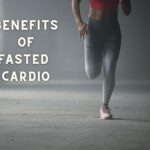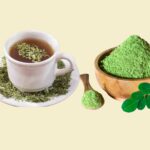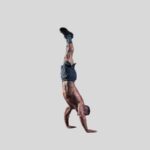Table of Contents
How Many Calories Are In Spring Mix?
Spring mix refers to a vernal melange of young, tender salad greens that offers a mildly sweet and slightly bitter flavor profile. In this blog post, we will tell you how many calories are in spring mix in a prepackaged grocery store staple that typically contains a lively blend of baby spinach, arugula, assorted lettuces, Swiss chard, and kale. The immaturity of the foliage imparts a delicate, smooth texture.
What is Spring Mix?
Spring mix consists of a potpourri of fledgling salad leaves, harvested while still petite and delicate. The blend often includes au courant greens like mizuna, tatsoi, and frisee. Standard ingredients encompass spinach, peppery arugula, soft red and green leaf lettuces, earthy Swiss chard, and curly kale. The young leaves offer a delectable flavor combo of gentle sweetness and pleasant bitterness.
Common Ingredients
While compositions fluctuate, usual suspects in spring mix incorporate spinach, bitter arugula, red and green leaf lettuces, Swiss chard, and curly kale, lending an array of flavors and textures. Spinach contributes vegetal sweetness, arugula brings zesty pepperiness, lettuces add softness, chard offers an earthy note, and kale provides vibrancy.
The verdant medley combines soft, supple young leaves with a satisfying blend of mild sweetness and tangy bitterness. This adds lovely complexity and nuance to salads.
Spring mix is a prevalent pre-washed salad mix available at most grocers, touting tender immature greens. The baby leaves are cut into bite-size pieces for salads. The accessible blend makes whipping up a salad a cinch!
Nutrition Facts for Spring Mix
This diminutive salad mix not only adds scrumptious flavor and texture contrast to dishes, it also boasts an impressive nutritional profile, while remaining extremely low in calories.
Related: How Many Calories Are In A Chef Salad?
How Many Calories Are In Spring Mix
With only around 20 calories per cup, spring mix is one of the lowest calorie salad greens available. The measly calories come mostly from carbohydrates, predominantly fiber, along with a smidgen of plant-based protein. This fresh, volumetric salad contains a trifling amount of fat.
Extremely Low In Calories
Ounce for ounce, spring mix contains barely any calories, clocking in at roughly 20 calories per cup. This makes it a prima weight loss food.
Calories From Carbs and Minimal Protein
The few calories in spring mix hail primarily from carbohydrates, mostly indigestible fiber, and a scant amount of plant-based protein. This vegetable mélange is very low in sugars.
Also Provides Fiber and Vitamins
In addition to being low calorie, spring mix delivers a spectrum of vitamins, minerals, and fiber, with virtually no fat.
Low Energy Density Food
With high water content and low calorie density, spring mix allows you to fill up on a large portion with negligible calories.
Comparing Calories to Other Greens
Spring mix has fewer calories per cup than most common lettuces and other salad greens, making it an optimal low calorie foundation for salads.
Fewer Calories Than Most Lettuces
Measured by volume, spring mix contains fewer calories per cup than most varieties of lettuce, including romaine, iceberg, Boston, and bibb lettuce.
Much Lower Than Kale, Chard, Spinach
On a per cup basis, spring mix clocks in at substantially less calories than nutrition powerhouses kale, Swiss chard, and spinach.
Arugula and Romaine Are Comparable
Arugula and romaine lettuce have a similar calorie density to spring mix, at around 20 calories per cup of leaves.
Why Spring Mix is Low in Calories
Several factors account for why nascent spring mix leaves are able to provide such bountiful nutrition with a minimal calorie burden.
Mostly Water and Fiber
Spring mix consists of low calorie water, which contributes weight and volume, and fiber, composed of indigestible carbohydrates that provide few usable calories to the body.
No High Calorie Add-Ins
Plain spring mix does not contain any high calorie add-ins like oily salad dressings, cheeses, croutons, or other fatty toppings that can quickly ratchet up the total calorie count.
Raw Form Has Less Calories
Because spring mix is consumed raw, it has fewer calories than if the greens were cooked, which condenses nutrients and calories as water is evaporated away.
Immature Greens Are More Tender, Lower Cal
Younger, delicately budding leaves that comprise spring mix are less fibrous, dense, and compact compared to their mature counterparts, leading to their lower calorie content.
Maximizing Nutrition Without Extra Calories
Crafting a spring mix that emphasizes dark leafy greens, and pairing it with lean protein and healthy fats, allows you to maximize nutritional bang for your caloric buck.
Focus on Dark Leafy Greens
Choosing spring mix blends that feature deeper colored greens like spinach, kale, chard, and arugula provides more micronutrients.
Spinach Provides Fiber, Vitamins, Minerals
Spinach contributes protein, niacin, zinc, iron, vitamins A, C, E, K, and antioxidants to spring mix.
Kale Has Antioxidants, Vitamins A, C, K
Brassica green kale supplies a wallop of antioxidants along with vitamins A, C, and K.
Arugula Has Folate and Phytonutrients
Peppery arugula contains folate, vitamins C and K, and protective glucosinolates.
Pair with Lean Protein and Healthy Fats
Complementing spring mix with lean poultry, fish, or plant proteins, nuts, seeds, and vinaigrettes enhances nutrition.
Avoid Heavy Creamy Dressings
Steer clear of dousing spring mix with high calorie creamy or oily dressings and fatty toppings to avoid racking up calories.
Tips for Choosing Spring Mix
Keep these tips in mind when selecting bags of spring mix for maximum enjoyment and nutrition with minimum calories.
Seek Out Mixed Colors and Textures
Scan ingredients lists and visually inspect bags to ensure a variety of colorful leaves like spinach, kale, chard, and lettuces for multifaceted flavors and nutrients.
Choose Organic If Possible
Opting for organic spring mix minimizes exposure to synthetic pesticide residues that concentrate on and within leaves.
Check for Freshness
Avoid bags with excessive moisture or browning leaves, indicative of decay. Salad should look crisp, not wilted.
Wash Thoroughly Before Eating
Properly washing spring mix eliminates dirt and decreases bacteria for food safety. Pat leaves dry before using.
Refrigerate Promptly and Use Before Expiry
Refrigerate spring mix ASAP after purchasing to maximize longevity, and use by expiry date or within 5-7 days for best quality.
Ways to Enjoy Low Calorie Spring Mix
This adaptable salad green medley can add volume, texture, color and ravishing flavor to myriad dishes beyond boring side salads.
Simple Vinaigrette Dressing and Lean Protein
Toss spring mix with a simple oil and vinegar dressing, balsamic or citrus vinaigrette, and add grilled chicken, salmon, steak or chickpeas for an easy main dish salad.
With Avocado, Nuts, Beans and Light Dressing
Transform spring mix into a hearty meal by augmenting it with protein-rich beans, healthy fats from avocado and nuts, and a light sprinkle of olive oil and lemon.
Blended Into Smoothies
Blend a handful of spring mix into fruit or vegetable smoothies to add a nutrition boost without additional calories or noticeable change in flavor.
As Base for Grain Bowls and Buddha Bowls
Use a bed of spring mix in lieu of grains as the foundation for colorful vegetarian grain bowls or Buddha bowls topped with veggies, legumes, tofu, nuts.
In Wraps, Sandwiches and Tacos
Substitute spring mix for sandwich bread, tortillas or taco shells to slash calories. Load it up with your favorite fillings.
Sauteed with Garlic and Olive Oil
Sautee spring mix briefly with a touch of garlic and olive oil to gently wilt while retaining texture and vitamins.
Spring Mix Adds Nutrition Without Packing on Calories
With its extremely low calorie density, prodigious water content, spectrum of micronutrients, and versatility, spring mix is a salient way to add nutrition to your diet without dropping major calories.
Harness its Low Energy Density and Water Content
Take advantage of spring mix’s high water composition and low energy density to maximize the volume you can eat with minimal caloric impact.
Bulk Up Dishes Without Calories
Incorporate spring mix into a broad range of dishes as a creative way to bolster nutrition and up the volume and satisfaction factor without tacking on calories.
Nutritional Jackpot of Vitamins and Phytonutrients
Spring mix provides a rich reservoir of antioxidants, vitamins A, C, E, K, folate, and phytonutrients to nourish your body with negligible calories.
Feel Full Eating a Large Portion
Thanks to its low energy density, spring mix allows you to fill a salad bowl or plate without overconsuming calories, keeping hunger at bay.
Use Beyond Just Salads
Get innovative with ways to use spring mix in smoothies, wraps, sandwiches, grain bowls, stir fries, and more to amplify nutrition and enjoyment.
















